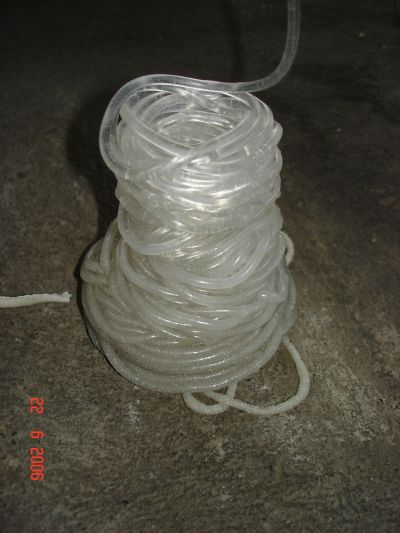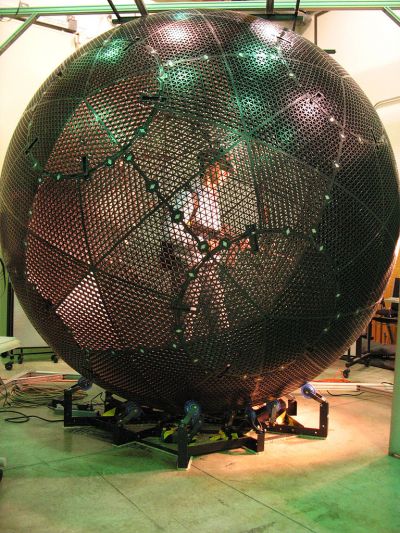
European-Korean collaboration in the fields of ambient intelligence and ubiquitous computing promises to rapidly advance the Internet of Things (IoT).

Fuel cells are a promising candidate technology in helping to improve environmental performance of next-generation aircraft and can operate using a variety of fuels. An EU-funded project looked at ways to produce hydrogen from the jet fuel that aircraft already carry.

The demand for smart devices is leading to an increasing downsizing of electronic circuits. EU-funded scientists studied novel nano-oscillators instead of conventional oscillators to overcome the barrier of miniaturisation.

The successful testing of a 1 500-m-long freight train marked the start of a completely new era in European freight transport. The test was a major step toward a more competitive rail freight industry with more efficient rail operation and decreased costs.

Increasing the fraction of non-metallic components in aircraft has given rise to questions regarding electrical conductivity. An EU-funded project exploited nanotechnology to develop novel multifunctional composite materials that can efficiently conduct electric current.

Research and innovation (R&I) can help Mediterranean countries to develop and promote sustainable energy. An EU initiative is supporting R&I in the renewable energy and energy efficiency (RE&EE) domain in the Mediterranean basin.

Integrating international, multimodal journey planning remains a challenge. Building on an earlier initiative in intermodal transport, an EU initiative designed an enhanced online and mobile platform enabling travellers to optimise their trips and travel more easily.

Synthetic oxygen barriers protect foods, pharmaceuticals and cosmetics from detrimental contact with air and moisture. EU-funded scientists have developed novel bio-based barriers from cheese by-products for complete recyclability.

Internal combustion engines (ICEs) have been around since the 19th century and are the most common power generating devices in use. New lubrication technologies will significantly increase engine efficiency and decrease emissions in automotive applications.

A new logistics model means different customers can bundle their freight flows. An EU initiative developed tools and legal frameworks to facilitate business adoption of this concept.

A recent project has promoted the uptake of information and communications technology and robotics solutions for the challenges faced by European agriculture.

EU-funded scientists developed an innovative laser optical procedure that allows measurement of material deformation in wind turbine blades.

Transportation is one of the key factors in European economic performance and competitiveness. An EU initiative is providing advice on how to most effectively invest in public and private infrastructure.

Optimising fuel cell technology can reduce noise and emissions. An EU initiative plans to unveil a portable power solution for powering devices in recreational vehicles (RVs).

There are roadblocks to designing and manufacturing lenses and frames based on specific end-user specifications and then making them commercially viable. An EU initiative has developed technology and flexible and easily reconfigurable business models to produce and bring to the market these new products.

Buildings in Europe currently account for approximately 40 % of its annual energy consumption and carbon dioxide emissions. Low-cost, eco-friendly insulation technology will help Europe's small and medium-sized enterprises (SMEs) retrofit buildings effectively.

The amount of lightweight aluminium in new cars is increasing, but current methods to get rid of hydrogen gas (H2) bubbles that create porosities are expensive, inefficient and hazardous. Novel ultrasonic technology is headed to market to keep aluminium on the road.

EU-funded researchers have married inorganic and organic building blocks for the assembly of rotaxanes that could one day be used to develop quantum computers.

Routine inspection and maintenance can be anything but routine in large industrial settings. An EU initiative has developed autonomous robotic technology to protect capital investment and promote human safety.

European small and medium-sized enterprises (SMEs) working in the cast iron foundry business require modernisation to remain competitive. A large European consortium is implementing lean manufacturing principles and advanced control to fill this need.

An EU team is developing an idea for unmanned shipping. The proposal involves designs for various modular on-board systems for ship control, sensing and communication, plus onshore stations.

Lithium-ion (Li-ion) rechargeable batteries are the standard in today's electric vehicles, but they need a recharge after about 150 km. Li-air batteries could soon change that, and pioneering work has highlighted design considerations.

Polyhydroxybutyrate (PHB) is a biodegradable polymer formed from renewable resources, namely fermentation processes in several kinds of bacteria. Scientists have now overcome the main obstacle to using PHB: poor mechanical properties.

There is a plethora of long-term foresight studies on a cleaner, greener and more user-friendly European transport industry. An EU initiative aims to summarise all this available information and to compare and evaluate the various visions and policies to reach their intended targets.

There is growing interest in the potential and power of immersive technology for scheduled and emergency maintenance in extreme environments such as nuclear installations. An EU initiative is exploring the use of virtual reality (VR) and augmented reality (AR) – the blending of virtual reality and real life – for personnel safety systems.
























